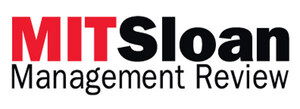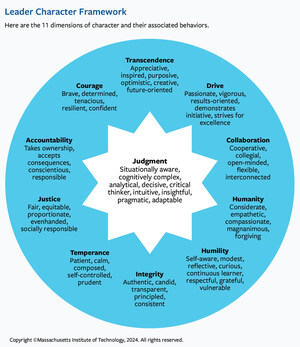CAMBRIDGE, Mass., Sept. 12, 2023 /PRNewswire/ -- According to research released today in MIT Sloan Management Review, by understanding the unique paths that digital tools afford for creativity, managers can continue to foster innovation, even in the digital workplace. When groups use tools such as Slack and Teams, their choices to collaborate in either public or private channels will provide inherent possibilities for distinct paths to produce different creative outcomes.
"Much like physical office designs have changed over the years to spur employee innovation from walled cubicles to open environments, so too are there choices in digital collaboration tools with important implications for members of public channels and private groups," asserts Wietske Van Osch, Canada Research Chair in Enterprise Social Media and Digital Collaboration at HEC Montreal and an associate professor at Michigan State University.
What seems like a simple decision — making a private group or a public group via collaboration tools — can set teams on different paths toward either incremental or breakthrough innovations.
Developmental creativity involves combining or expanding existing concepts to produce new outcomes. In these instances, collaborating in public channels has been found to be more pertinent. Disruptive creativity, which involves the creative destruction of an object or problem so that a new view of the object or problem emerges, is more likely to grow from groups that set communications to private.
The interactions studied and released in "The Profound Influence of Small Choices in Digital Collaboration" suggest that when these paths are misaligned, creativity tends to stall.
Managers need to act and think strategically, combining different features of collaboration tools in use with the appropriate communication structures, to reap the best benefits. Here are three points for managers to consider in doing so:
- Choose collaboration tools that allow both public and private spaces;
- Consider how to support private groups that they cannot see or monitor and how to make the knowledge embedded in these groups available to the broader organization;
- Combine different groups to create multiple pathways to different types of creativity.
"Leaders need to be mindful that there is no one-size-fits-all approach to innovation. What is most effective depends on the scope of ambition and the stage of the innovation process. They must empower users to blend and embrace multiple paths to creativity, and leverage these paths for maximizing the creative potential of their digital workforce," added Burcu Bulgurcu, an assistant professor and Rogers Cybersecure Catalyst research fellow at Toronto Metropolitan University's Ted Rogers School of Management.
"The unique power of these tools lies in being able to combine and manage the two paths in parallel. For instance, a group could start with a private channel to foster risk-taking and idea incubation and then create a public channel to obtain feedback once a minimally viable idea has been established that would allow them to test and iterate the idea with a broader set of colleagues," emphasizes Van Osch.
The MIT Sloan Management Review article "The Profound Influence of Small Choices in Digital Collaboration" publishes at 8 a.m. ET on Sept. 12, 2023.
The Research
The authors studied communications among 215 different groups — of which 109 were public groups and 106 were private — at a large manufacturing company that was using a digital collaboration platform. They used a machine learning algorithm to classify the 28,083 conversations within those groups as evidence of either developmental creativity (via the combination or expansion of existing concepts) or disruptive creativity (via reframing problems to reach a novel solution). They identified instances of bridging and bonding from the network data embedded in the platform. In combining the insights about transparent versus private settings, and bridging versus bonding ties, the authors identified two distinct paths that led to either developmental creativity or disruptive creativity.
About the Authors
Wietske Van Osch holds the Canada Research Chair in Enterprise Social Media and Digital Collaboration at HEC Montreal and is an associate professor at Michigan State University. Burcu Bulgurcu is an assistant professor and Rogers Cybersecure Catalyst research fellow at Toronto Metropolitan University's Ted Rogers School of Management. This project was funded in part by the National Science Foundation (IIS-1749018) and the Canada Research Chairs program.
About MIT Sloan Management Review
MIT Sloan Management Review is an independent, research-based magazine and digital platform for business leaders, published at the MIT Sloan School of Management. MIT SMR explores how leadership and management are transforming in a disruptive world. We help thoughtful leaders capture the exciting opportunities — and face down the challenges — created as technological, societal, and environmental forces reshape how organizations operate, compete, and create value.
Connect with MIT Sloan Management Review, on:
Contact:
Tess Woods
[email protected]
617-942-0336
SOURCE MIT Sloan Management Review

WANT YOUR COMPANY'S NEWS FEATURED ON PRNEWSWIRE.COM?
Newsrooms &
Influencers
Digital Media
Outlets
Journalists
Opted In




Share this article